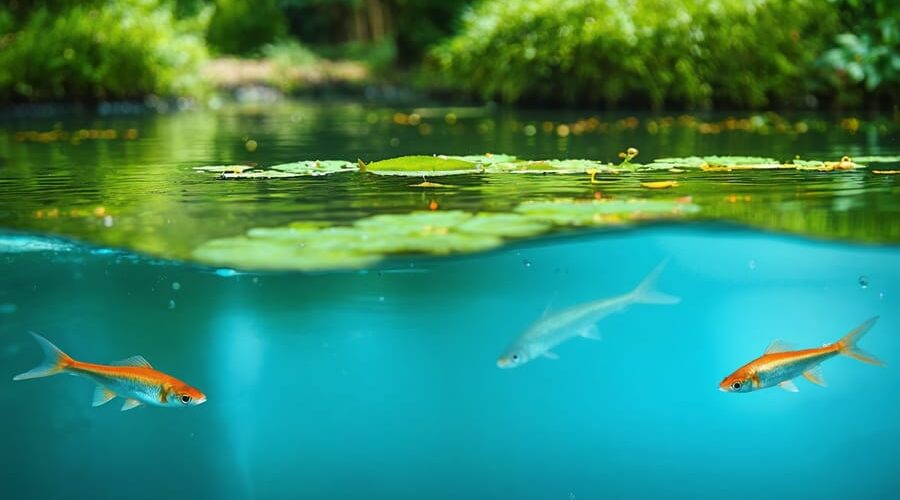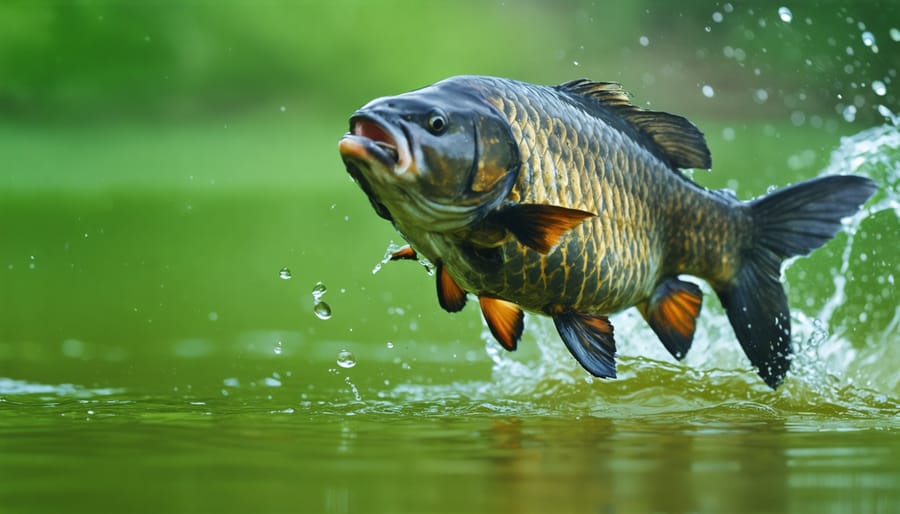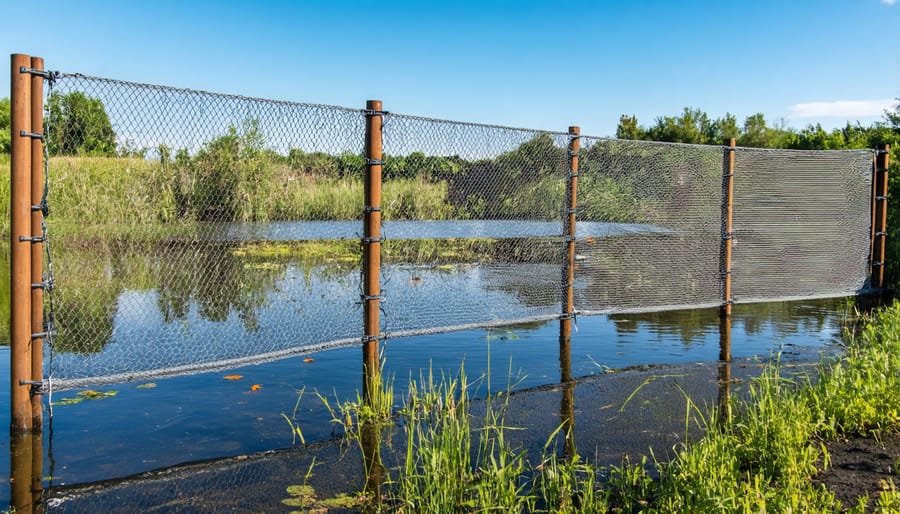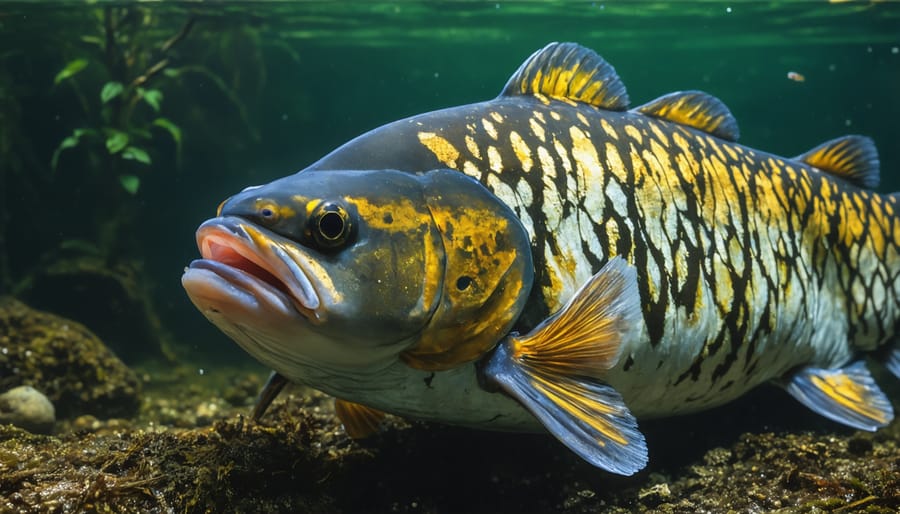
Protect Your Pond: How to Stop Invasive Fish Before They Take Over
Invasive fish species threaten more than just the natural balance of our waterways – they can completely devastate your carefully cultivated healthy pond ecosystem within weeks. From aggressive carp uprooting essential plants to mosquito fish outcompeting native species for food, these unwanted aquatic visitors pose a serious challenge for pond owners nationwide. But don’t worry – you’re not powerless against these underwater invaders. Understanding the early warning signs and implementing preventive measures can protect your pond’s delicate balance before damage occurs. Whether you’re a seasoned pond keeper or new to water gardening, knowing how to identify, prevent, and manage invasive fish species is crucial for maintaining the beauty and biodiversity of your aquatic sanctuary. Let’s dive into practical, proven strategies that will help you safeguard your pond while keeping its natural charm intact.
Common Invasive Fish Species That Threaten Pond Health
Bottom-Feeders Gone Wild
Bottom-feeding invasive fish species have become a major headache for pond owners across the country, with Asian carp leading the charge. These hungry herbivores don’t just nibble at pond vegetation – they demolish it! Common carp and grass carp can uproot entire plants and stir up sediment, turning crystal-clear water into a muddy mess.
These underwater bulldozers typically enter ponds during floods or through connected waterways. Once established, they reproduce rapidly, with a single female capable of laying up to a million eggs annually. Their feeding habits not only destroy native plant life but also compete with local fish species for food and space.
Beyond carp, other problematic bottom-feeders include the weather loach and oriental weatherfish. These eel-like fish burrow into pond bottoms, destabilizing banks and disrupting natural habitats. They’re particularly troublesome because they can survive in various conditions and even travel short distances over land when conditions get tough.
The impact of these bottom-feeders goes beyond just plant destruction. By stirring up sediment, they release nutrients that can trigger algae blooms and reduce water quality. They also disrupt the natural food chain by outcompeting native species and altering the pond’s ecosystem balance.
For pond owners, prevention is crucial. Installing barriers in water inlets and regularly inspecting for signs of invasion can help keep these unwanted guests at bay. If you spot these invasive species early, professional removal services can help before the problem gets out of hand.

Aggressive Predators
Among the most concerning invasive fish species are aggressive predators that can devastate local ecosystems and pose a serious threat to native fish populations. The Northern Snakehead, often called “Frankenfish,” is particularly problematic. These fish can grow up to three feet long and have a voracious appetite, consuming everything from small fish to frogs and even small birds.
Another notorious predator is the Asian Swamp Eel, which can survive in both well-oxygenated and poorly oxygenated waters. These adaptable creatures can even breathe air and travel short distances across land, making them extremely difficult to control once established.
The Bullseye Snakehead has become a major concern in Florida’s waterways, where it preys on native species and competes for resources. Like its northern cousin, this fish is an aggressive hunter that can quickly throw a pond’s ecosystem out of balance.
Largemouth Bass, while popular among anglers, can become invasive when introduced to waters where they don’t naturally occur. They’re particularly destructive in smaller ponds, where they can quickly become the dominant predator and dramatically reduce populations of smaller fish species.
For pond owners, preventing these predatory fish from entering your water feature is crucial. Regular monitoring, proper screening of water sources, and careful selection of fish stocks are your best defenses against these unwanted visitors.
Prevention: Your First Line of Defense
Smart Stocking Practices
When it comes to adding fish to your pond, practicing responsible fish stocking is crucial to prevent invasive species from taking over. Start by researching native fish species that are well-suited to your local ecosystem. These fish have evolved to thrive in your region’s climate and won’t pose a threat to natural waterways if they accidentally escape.
Always purchase fish from reputable dealers who can provide documentation about the species’ origin and health status. Avoid buying fish from unknown sources or accepting donations from well-meaning friends who might not understand the risks of introducing non-native species.
Before adding new fish, quarantine them in a separate tank for at least two weeks. This helps identify any potential diseases and ensures they’re healthy before introducing them to your main pond. During this time, observe their behavior and look for signs of aggressive tendencies that might indicate invasive characteristics.
Keep detailed records of the fish you stock, including species names, quantities, and dates of introduction. This information becomes invaluable if you need to manage your pond’s population later. Remember to consider your pond’s size and existing ecosystem – overcrowding can stress fish and lead to unwanted breeding or competition for resources.
Never release unwanted fish into natural waterways. If you need to reduce your pond’s population, work with local fish stores or pond maintenance professionals who can properly rehome them. By following these smart stocking practices, you’ll create a balanced, sustainable pond ecosystem that brings joy without threatening the environment.
Physical Barriers and Controls
Physical barriers are your first line of defense against invasive fish species, and the good news is that they’re relatively simple to implement. Screens and nets come in various mesh sizes, with ¼-inch being ideal for most situations. Install these at water entry and exit points, including pond overflows and connecting waterways.
For pond owners, barrier nets are particularly effective when placed across stream connections or drainage areas. These nets should be checked and cleaned regularly to prevent clogging with debris, which could cause water backup issues. During maintenance, inspect for any tears or damage that might create entry points for unwanted fish.
Electric barriers can be installed in larger water systems, though these are typically more suitable for commercial applications. For home ponds, physical exclusion methods like bottom barriers and containment systems work well. These prevent both adult fish and eggs from entering your pond system.
Remember to consider seasonal changes when installing barriers. Spring usually requires extra vigilance as this is when many invasive species are most active. Double-check your barriers before breeding seasons begin, and ensure they’re properly secured after storms or heavy rains.
One often overlooked but effective barrier is creating shallow areas or rapids in connecting waterways. Many invasive fish species prefer deeper, calmer waters, so these natural barriers can help deter them while adding visual interest to your pond.

Spotting the Warning Signs
Being proactive in spotting potential invasive fish problems can save you from major headaches down the road. Just like other common pond threats, invasive species often show warning signs before becoming a full-blown problem.
Keep an eye out for unexplained changes in your pond’s ecosystem. If you notice your regular fish population declining or hiding more than usual, this could indicate the presence of aggressive invasive species. Watch for unusual ripples or splashing, especially during early morning or evening hours, as many invasive fish are most active during these times.
Changes in water clarity can be another red flag. If your typically clear pond becomes increasingly murky despite proper filtration, you might have bottom-feeding invasive fish stirring up sediment. Look for unexplained damage to aquatic plants, particularly torn or uprooted vegetation, as many invasive species are voracious plant-eaters.
Regular pond maintenance provides perfect opportunities for early detection. While cleaning filters or skimming debris, check for unfamiliar eggs or fry. Many invasive fish reproduce rapidly, so spotting their offspring early is crucial. Pay attention to any new fish that suddenly appear in your pond – they could be unwanted visitors from nearby water bodies or illegal releases.
Consider keeping a simple pond diary to track changes. Note your regular fish count, water clarity, and plant health. This makes it easier to spot concerning patterns early on. If you’re unsure about any fish in your pond, take clear photos and consult local wildlife authorities or pond experts for identification.
Remember, prevention is always easier than cure. Regular monitoring and quick action at the first sign of trouble will help keep your pond healthy and invader-free.
Taking Action: Control and Removal Methods
Humane Removal Techniques
When dealing with invasive fish species, it’s essential to use humane methods that minimize stress and suffering. Here’s a step-by-step guide to removing unwanted fish from your pond or water feature:
1. Net Removal
Start with traditional fishing nets during early morning or evening hours when fish are most active. Use a large, fine-mesh net to prevent smaller fish from escaping. Make swift, deliberate movements to reduce stress on the captured fish.
2. Trap and Transfer
Set up fish traps overnight when fish are feeding actively. Place bait inside specially designed fish traps and check them every 12 hours. Once caught, transfer the fish immediately to a holding container with fresh water from the same source.
3. Drain and Collect
If possible, gradually lower the water level to concentrate the fish in a smaller area. Keep some water in the deepest part of the pond where you can easily collect the fish. Maintain proper oxygenation during this process using an air pump.
4. Proper Handling
Always use wet hands or wet gloves when handling fish to protect their sensitive coating. Keep them in water as much as possible during the removal process. Never leave fish exposed to air for extended periods.
5. Responsible Relocation
Contact local wildlife authorities or fish and game departments for guidance on proper relocation. Never release invasive species into natural waterways. Some areas have designated facilities that accept unwanted fish.
Remember to document your removal efforts and monitor the pond afterward to ensure all invasive fish have been successfully removed. Consider preventive measures like barriers and regular monitoring to avoid future invasions.

Professional Help Options
While many pond owners can handle basic invasive fish control, there are situations when professional help becomes essential. If you notice rapid population growth of invasive species despite your control efforts, or if you’re unsure about species identification, it’s time to contact an expert.
Local fish and wildlife departments often provide free consultations and can guide you through proper fish health management while addressing invasive species concerns. These experts can assess your situation and recommend targeted solutions specific to your pond’s ecosystem.
Consider hiring a professional pond management service if:
– Your pond is larger than 1/4 acre
– Multiple invasive species are present
– Native fish populations are declining rapidly
– Legal permits are required for removal
– Chemical treatments are necessary
Professional services typically offer comprehensive solutions, including:
– Accurate species identification
– Environmental impact assessment
– Safe removal methods
– Prevention strategies
– Ongoing monitoring
When selecting a professional service, look for:
– Licensed and certified operators
– Experience with your specific invasive species
– Knowledge of local regulations
– Positive customer reviews
– Clear, detailed treatment plans
Remember to keep documentation of any professional interventions for future reference and potential regulatory requirements.
As we’ve explored throughout this article, invasive fish species pose a significant threat to our pond ecosystems, but with knowledge and vigilance, we can protect our water gardens. Remember, prevention is always better than cure – carefully sourcing your fish, regularly inspecting new additions, and maintaining proper barriers are your best defense against unwanted aquatic visitors.
Stay connected with your local pond community and keep up-to-date with regional invasive species alerts. If you spot something suspicious, don’t hesitate to contact your local wildlife authorities. Early detection and rapid response can make all the difference in preventing an invasion from taking hold.
Consider becoming a pond steward in your community by sharing what you’ve learned about invasive fish species with fellow water gardeners. The more we work together, the better chance we have of preserving our beautiful water features for years to come.
Make regular pond maintenance and monitoring part of your routine. Take photos of your fish population and keep records of any changes you notice. This documentation can be invaluable if you need to identify new or concerning species later.
By staying informed and taking proactive steps, you’re not just protecting your own pond – you’re contributing to the broader effort to preserve our native aquatic ecosystems. Remember, every responsible pond owner plays a crucial role in preventing the spread of invasive fish species.
